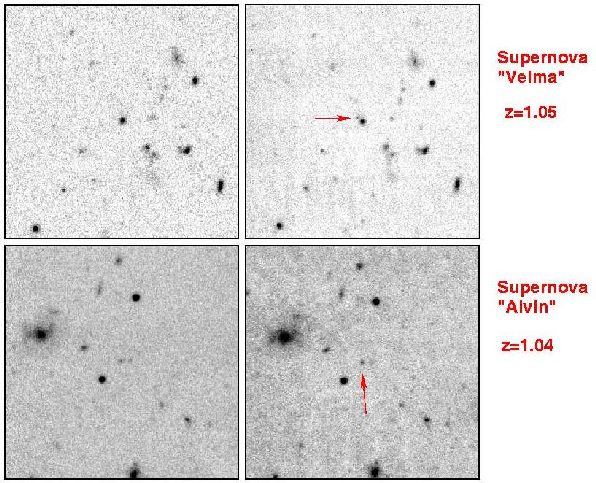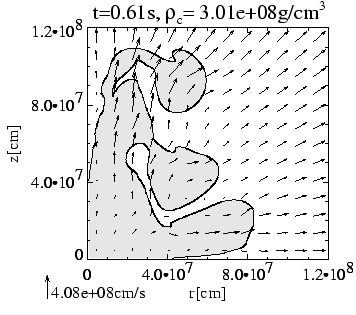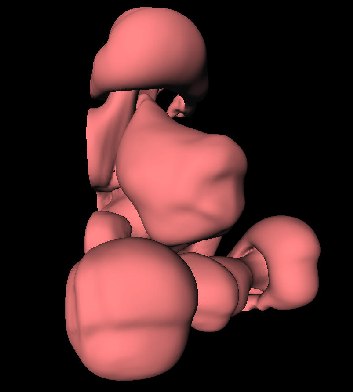Type Ia Supernova Simulations |
With today's powerful telescopes and sophisticated search methods it is possible to observe explosions of white dwarf stars (so-called Supernovae Ia or SN Ia) that occur at the extreme distances of several billion light years from earth. Looking into the remote corners of the universe also implies looking back in time, hence these events already happened at a time when the cosmos was considerably younger than today. Figure 1 shows two of the recent discoveries made by the High-z Supernova Search Team.

|
| Figure 1: Two distant supernovae discovered by the High-z Supernova Search Team in 1999. Snapshots are taken before and after the outburst. |
To the observer, a supernova appears as a star which becomes extremely bright during a period of several days, reaches a maximum which can be brighter than a whole galaxy, and dwindles again during the following months. It has been known for several decades that all Supernovae Ia in our cosmic "neighbourhood" reach nearly the same maximum luminosity, i.e. if two of them happened at the same distance from earth they would appear equally bright.
This fact can be used to estimate the distance to the recently discovered remote supernovae. Together with the redshift of these events, it is possible to deduce several important parameters of our universe like the Hubble constant H, which tells us how old the cosmos is and how fast it is presently expanding.
However, the distant supernovae exploded when the universe was still very young; at that time, the stars that were disrupted by the supernova explosion (the supernova "progenitors") were not exactly identical to the progenitors of the nearby SN Ia. For example, in the early universe, the stars consisted of a slightly different mix of chemical elements than today. Therefore one cannot be absolutely sure that the maximum brightness of the distant supernovae is the same as the one deduced from nearby ones, and the predictions of the cosmological parameters based on this assumption may be incorrect.
To investigate possible differences between nearby and distant SN Ia, the hydrodynamics group at MPA is developing a code that simulates in detail the physical processes occurring in an exploding white dwarf. The star is ignited near the center and a thermonuclear fusion flame propagates outwards and is wrinkled and torn by the turbulent motions in the star's interior. After only two seconds the fusion reactions stop and the whole star flies apart, forming an expanding cloud which consists mainly of radioactive nickel and unburnt carbon and oxygen. Figure 2 and 3 show snapshots of the burning front of a 2D and 3D simulation, respectively. The most prominent feature of the flame geometry is the characteristic mushroom shape that is always observed when light material (in our case the hot reaction products) rises into a denser medium.

|

|
| Figure 2: Snapshot of the front geometry of a 2D supernova simulation. The center of the star is at the bottom left corner of the diagram. | Figure 3: Front geometry in a 3D run. Only one octant of the star has been simulated. The center is located at the back lower left corner. |
This kind of hydrodynamic problem is very demanding in terms of computer time and hardware: the three-dimensional simulation presented in Figure 3 requires about 30 hours on 256 processors of a Cray T3E supercomputer and produces nearly 50 Gigabytes of output. If the resolution is doubled, the memory requirement increases by a factor of 8 and the CPU time by a factor of 16.
As the numerical code is still under development, predictions about the behaviour of very distant supernovae and their similarity (or dissimilarity) to local supernovae are not yet possible. Definite results are expected in a few years' time.
M. Reinecke,
W. Hillebrandt
| MPA-Home |